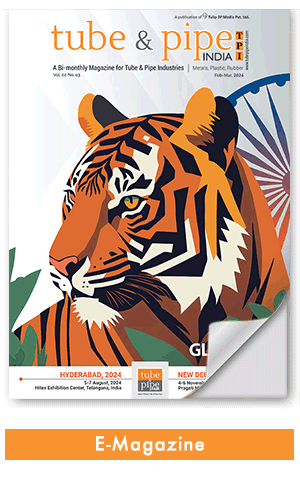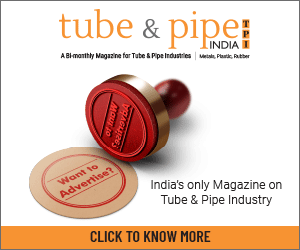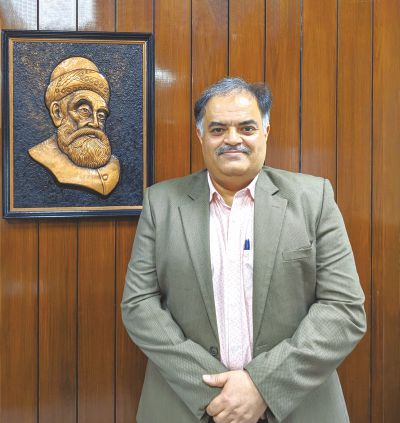
TATA Steel Tubes division having a current capacity of 1.2 million TPA forged by their 4 manufacturing facilities at Jamshedpur, Khopoli, Sahibabad, and Hosur along with 9 tube manufacturing partners (TMPs), aspire a minimum 3x growth reaching to 4 million TPA capacity by FY30 to align the Tubes division with TATA Steel’s growth plan of achieving 40 million TPA capacity by FY30. They plan to go aggressive in increasing their customer base, specifically in the retail and construction segment, for which they are adding new manufacturing facilities and service centres across locations. In a recent interaction with Tube & Pipe India, Mr. Sanjay Sahni, Executive-In Charge, TATA Steel Tubes Division, talked about TATA Steel’s Tubes division’s journey, products offered, and market footprint. He also shared his insights about the current market scenario and future plans of the company.
Tube & Pipe India: Kindly share the business journey of TATA Steel’s Tubes division, outlining the major milestones and achievements.
Sanjay Sahni: TATA Steel’s Tubes division has been growing at a CAGR of 11 percent for the past 5 years and the growth has accelerated to the rate of 16 percent in the past 9 months over FY23. Our focus has been more on increasing our retail presence and higher share of business in the construction sector where we have cumulatively grown by 28 percent over last year. One of the major milestones has been the integration of TATA Steel Meramandali Tubes business into the existing ecosystem in 2022, which has helped us diversify our product portfolio and venture into the oil & gas sector. Another area that the Tubes division has been focusing on is the capacity expansion of the Tubes division to achieve 4 million TPA by FY30. This aligns with TATA Steel’s growth plan of achieving 40 million TPA capacity by Fy30.
We have also added a new product range of high aspect ratio tubes used for sustainable applications as an alternative to wood and plastic. We are actively present across multiple segments and sub-segments, especially projects with national importance. We have contributed significantly to infrastructure projects like the construction of more than 60 airports, 20 metro rail projects, over 40 railway station development projects, and 7000+ km of cross-country and city gas distribution network.
Apart from infrastructure, we have supplied tubes for the construction of more than 180 million sq. ft. of industrial and warehousing structures, for various applications. We have started to increase our presence in international markets and plan to take this to 10 percent of our overall sales in the coming years.
Tubes is a diverse business with thousands of SKUs in numerous grades and BIS standards, but we can classify it into 4 broad offerings.
- Structural Tubes
- Conveyance Tubes
- Precision Tubes
- Pipes for Oil & Gas
They are further categorized into 4 lines of businesses based on the market segments that they cater to, namely, brands & retail (B&R); construction, infrastructure & industrial projects (CIIP); oil and gas (O&G); and boiler, automotive and general engineering (BAGE).
TPI: Could you walk us through the tube division’s manufacturing facilities, infrastructure, and machinery setup along with production capacity?
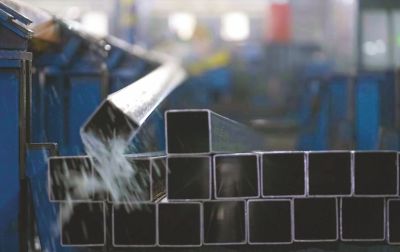
SS: The tubes division’s current capacity stands at 1.2 million TPA forged by our 4 manufacturing facilities at Jamshedpur, Khopoli, Sahibabad, and Hosur along with 9 tube manufacturing partners (TMPs) spread across eastern and northern parts of the country. Our in-house capacity is at 700 thousand TPA while our TMPs contribute around 500 thousand TPA. In the last 9 months, the tubes division has added 172 thousand TPA capacity through the addition of 2 new manufacturing partners and the enhancement of 2 existing tube manufacturing partners across locations. We have been operating with the traditional standard tube mill at Jamshedpur, however, we also have a new hollow section universal mill coming up in Jamshedpur of 100 thousand TPA capacity with the latest direct forming technology. Tubes division is on a growth journey, and we are also venturing into the addition of new manufacturing facilities at strategic locations alongside the expansion of existing ones in the coming months to enhance our capacity further.
“The Indian tubes and pipes market is expected to grow by more than double in the next 7 years. It is a highly competitive market with over 200 players.”
TPI: Please elaborate on the product range of TATA Steel’s Tubes division, emphasizing on their features, applications, and advantages.
SS: We have a diverse range of products. Our product basket covers the entire range of ERW tubes starting from ½” or 15 NB to 24” or 600 NB diameter and thickness ranging from 1 mm to 20 mm. We are currently the only tube manufacturing company in India that can produce 600 NB pipes through the ERW route. We have a range of products including our top-selling MS black tubes, galvanized tubes, large dia pipes, API pipes, doors, and window frames along with our latest addition on high-aspect-ratio (HAR) tubes that have a higher breadth-to-depth ratio, i.e., up to 11:1. (275 mm: 25mm) and thinner casing pipes.
The tubes division manufactures hollow structural steel sections under the brand TATA Structura, which conforms to IS: 4923, IS: 1161 for rectangular, square, and circular hollow sections. These sections are easy to bend and ideal for welding making it perfect to construct unique and aesthetically appealing structures without compromising strength, beauty, and durability, thereby making TATA Structura, a preferred brand by architects and structural engineers in various construction segments. TATA Structura is our umbrella brand, and we also have sub-brands under this category like TATA Structura Z+, and TATA Structura GP which are our galvanized products in structural tubes. We also have TATA Ezyfit which is the steel doors and window frames brand.
For conveyance application, Tata Pipes is one of the first brands of plumbing pipes in India and has played a crucial role in the modernization of the country. These pipes cater to the requirements of process industries, irrigation, HVAC, firefighting as well as plumbing applications for water supply.
We also have TATA Precision Tubes, which are manufactured with utmost precision and cater to high-end automotive and industrial applications in the boiler segment. We have stringent quality control measures for best-in-class output, supported by robust supply chain and logistic capabilities. We offer customized cut-to-length tubes as an exclusive service for the automotive OEMs and ancillary customers, through the VMI (Vendor Managed Inventory) service model.
API pipes are high-quality ERW tubes for supplies to the oil and gas industry conforming to API 5L & API 5CT codes. These pipes can also be supplied along with epoxy, 3LPE & PU coatings as per the customer’s requirement. These pipes cater majorly to two broad application areas – Cross Country Pipeline (CCP) and City Gas Distribution (CGD), and slurry pipeline for iron-ore slurry transport. Over the last 2 years, we have had the highest market share in the domestic API pipes segment (for Govt projects) for products that are within our range.
TPI: Kindly tell us about the vast clientele and market share of TATA Steel’s Tube division. What according to you are the major USPs contributing to the Tube division’s growth?
SS: Tubes Division is the most diversified ERW tube maker in India. In FY23, the tubes division sold 877 thousand tons, and our overall market share was 14 percent in the ERW tubes segment. We are organized into market-focused verticals which include B2B, B2ECA, B2G, and B2C sales.
Our B2C sales are catered through the brands and retail vertical. We have more than 5000 dealers across the country who serve as our retail counters in the market providing a full range of our product basket to every individual housebuilder.
We are catering to various segments and applications, and around 35 percent of our total hollow section production is going for construction, infrastructure, and industrial projects. The majority of our supplies go into infrastructure and multinational projects (both public and private) and to the real estate or housing segment. Our share of business in the airport segment is high and currently, our focus is on redevelopment of railway stations. We have also supplied to many prestigious projects like the Jal Jeevan Mission under GOI, the Karnataka water pipeline project, and several infrastructures of national importance. Not only do we indulge in direct supplies to the customer, but we also have a strong foot amongst the AEC community. We also have a prominent customer list in the automotive segment, which includes auto ancillaries, boiler OEMs, and fabricators- TATA Motors, M&M, and MSIL are to quote a few of them.
We also have our tubes’ presence in the oil and gas sector. We supply the API grade pipes to the CCD (Cross Country Distribution) and CGD (Country Gas Distribution) segments. Our major customers in this category include IOCL, BPCL, ONGC, and GAIL. Our key USP lies in our consistent effort to offer high-quality products and services to our stakeholders with the help of our diversified team and well-developed distribution network across the country.
TPI: Kindly shed some light on the ongoing challenges and upcoming opportunities in the Indian tubes & pipes market.
SS: The Indian tubes and pipes market is expected to grow by more than double in the next 7 years. It is a highly competitive market with over 200 players. If we look at the structural steel tubes market as a percent of the total steel market, it is about 4 percent, which is almost half of the global average of 8 percent to 10 percent. ERW Structural Tubes is growing at a CAGR of 15 percent, which I think is a big opportunity for all tube players.
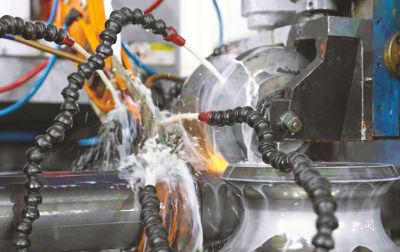
The market however has been dynamic for quite some time now and one of the biggest challenges has been the raw material price volatility aided by the geo-political tensions. The demand is huge in the marketplace currently with all the infrastructure development and urbanization happening along with the pre-election demand across territories. However, there is still an anticipation of price stability which lowers the pace.
The Ministry of Steel has been very active in promoting the usage of structural steel in India. The Indian economy is rapidly growing, sustained by good infrastructure spending and by investments by businesses from both inland and abroad. Several initiatives including affordable housing, expansion of railway networks, transmission and distribution, water supply, and sanitation projects are set to drive the rise in demand in the construction space. To support the growth aspirations, structural steel is a natural choice as a construction material. There has been an increasing trend of steel usage in both residential and commercial sectors. With the growing confidence of architects and the engineering community in structural steel, we can expect a boom in steel-based construction in our country.
Oil and gas pipelines are doing well and so is the 2-wheeler market in the automotive space. We do see a rising demand for seamless pipes, which currently remains unaddressed by the TATA Steel Tubes division. There’s a higher opportunity in this segment with advancements in coating technologies.The PVC/CPVC market is growing, and it will be challenging for all steel tube players to sustain their market share in segments like irrigation, plumbing, etc. The key is to adapt to the market and align our production with the changing demand.
Also Read: Kamdhenu Group Eyes Strategic Alliances to Strengthen the Brand
“In the last 9 months, the Tubes division has added 172 thousand TPA capacity through the addition of 2 new manufacturing partners and the enhancement of 2 existing tube manufacturing partners across locations.”
TPI: TATA Steel is globally well-established; please share your views on the current scenario of the global tubes & pipes market.
SS: The market is witnessing major change with a higher focus on sustainable practices and technological advancements. The transition to environmentally friendly and carbon-reduced production has become a central mission of the industry. Tube and pipe producers are converting their production facilities to make the whole manufacturing process more sustainable. Along with that, technological innovations in material composition are being highly explored. Simultaneously, manufacturers across the globe have a focus on improving their productivity, flexibility, and customer service. Innovative instruments such as Artificial Intelligence (AI) and Industry 4.0 are coming into play. Inflation is still relatively high and alarms our industry as well. Geopolitical turbulences are increasingly taking effect on market developments and consequently strategic planning. Risk management is the key to navigating through such unanticipated situations.
A recent study published by Global Construction Perspective and Oxford Economics entitled “Global Construction 2030”, forecasts an 85 percent growth in global construction output to 15.5 trillion by 2030, with 3 countries i.e., China, USA, and India, accounting for 57 percent of global growth alone. The global construction market with about 5 percent of the global tube market presents another opportunity for pipe manufacturers with huge growth potential. The market penetration of structural tubes is quite unevenly distributed in the world and the growth pattern is greatly dependent on the regional GDP growth. The tube industry needs to further promote the benefits of tube applications and showcase the architectural perspectives. The automotive industry is moving towards weight reduction of vehicles which further supports the use of tubular products. The government of India is also supporting this through its FAME initiatives. The advancement in the automotive industry and the transition to electromobility are expected to fuel the tube industry. Tube manufacturers will endeavor to enter new vehicle series with larger volumes to further expand their presence in the light vehicle industry.
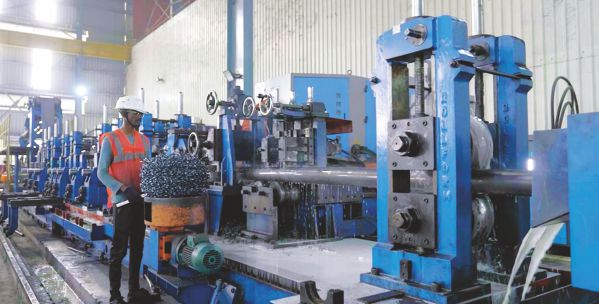
TPI: What are the company’s long-term and short-term plans for growth in the future?
SS: Our short-term plan is to expand our presence on both the digital and distribution fronts across the country. We plan to go aggressive in increasing our customer base specifically in the retail and construction segment. We are in the process of adding new manufacturing facilities and service centres across locations which will be key to our growth. Our focus is to develop our customers to have a strong inclination towards structural tubes and their advantages. We are incubating products to grow in the services and solutions space. TATA Steel Tubes division is also working on adopting DFT technology and its stabilization for future expansion.
For the long term, TATA Steel Tubes division would like to focus on the following areas in the next 5 years:
- Aspire a minimum 3x growth by FY30 to align the Tubes division with Tata Steel’s growth plan of achieving 40 million TPA capacity by Fy30.
- Increased focus on the ERW structural tubes market which is expected to grow at the rate of 15 percent CAGR. It’s a good opportunity for the structural tubes market.
- Backward supply chain integration, which will provide an edge to grow faster than competition.
- Exploration of new products (seamless, SAW pipes, etc.) and markets to evaluate business opportunities for a higher contribution in the tubes and pipe industry.
On a company level, we plan to focus on the following:
- Steel construction with International grades and standards – Indian construction can gain a lot by using these high strength steel and promote green/sustainable construction (Case in point: YST 355 which is being used internationally)
- New technology and tools adoption (like automated profile cutting) is very important to improve fabrication & enhance our infrastructural development. Optimizing design by using new-age technologies like CFT (concrete-filled tubes), composite systems, diagrid structures, etc. will also be important if we are looking at steel as the prime construction material.
- Productivity improvements/speedy construction in bigger construction projects can help a lot.
- Cost-effective construction with high-tech engineering and production processes.
TATA Steel is collaborating with customers and helping them design optimum steel structures. Like this more and more players need to come forward and help the steel construction industry in getting an economical construction.








